Deserts have long inspired human creativity, their stark landscapes and extreme conditions fostering settlements that blend necessity with artistic vision. Across arid regions worldwide, communities have transformed challenging environments into living masterpieces where architecture, culture, and natural surroundings create immersive experiences similar to contemporary art installations.
Here is a list of 20 desert towns that transcend mere habitation to become experiential art forms. Visitors find themselves walking through living galleries shaped by cultural history, environmental adaptation, and artistic intent.
Shibam, Yemen

Often called the ‘Manhattan of the Desert,’ Shibam rises dramatically from Yemen’s Hadramaut Valley with mud-brick skyscrapers dating to the 16th century. The densely packed towers, some reaching eight stories, create a striking silhouette against the desert backdrop, their geometric simplicity evoking modern minimalist sculpture.
The town’s ingenious natural cooling systems and structural engineering demonstrate how functional necessity created aesthetic mastery centuries before sustainable architecture became a global movement.
Huacachina, Peru

This desert oasis centers around a natural lake surrounded by massive dunes, creating a surreal composition of water, palms, and golden waves as if frozen in time. Traditional buildings with their white walls and terracotta roofs form a perfect crescent around the lagoon, their reflection in the water doubling the visual impact of this improbable settlement.
Local legend claims the lagoon formed from the tears of a princess, adding mythological resonance to this natural-cultural installation in the coastal desert.
Like Travel Pug’s content? Follow us on MSN.
Coober Pedy, Australia
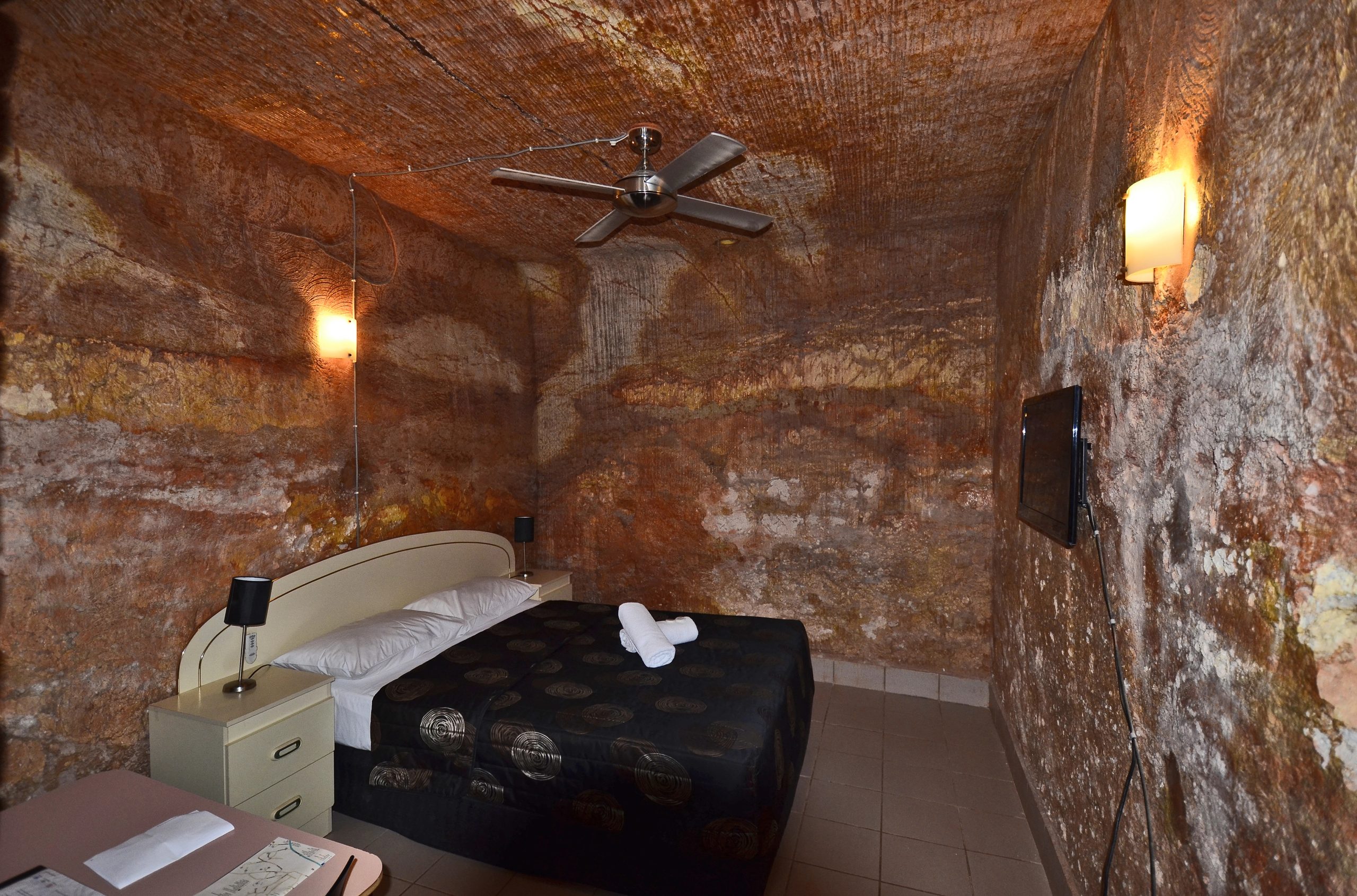
The underground town of Coober Pedy transforms subterranean living into an otherworldly experience, where homes, churches, and hotels are carved directly into the sandstone. The cave-like dwellings maintain a constant temperature despite extreme surface conditions, and their whitewashed interiors create luminous spaces reminiscent of light installations by contemporary artists.
Abandoned mining shafts and equipment scattered across the moonscape surface add industrial elements to this three-dimensional artwork spanning above and below ground.
Aït Benhaddou, Morocco

This ancient fortified village constructed from packed earth appears to grow organically from its rocky hillside, the kasbahs, and surrounding walls, forming a monumental earth sculpture. Varying shades of red clay create subtle color gradations that shift dramatically with changing light, while intricate geometric patterns in the architecture echo the mathematical precision found in Islamic art.
The site has served as a backdrop for numerous films, its timeless quality transcending specific historical periods.
Luxor, Egypt

Modern Luxor exists in constant dialogue with its ancient monuments, creating a living installation where past and present intertwine across the desert landscape. The town stretches along the Nile, with the Temple of Karnak and Valley of the Kings integrated into daily life.
Their massive stone forms create a permanent exhibition of monumental sculpture. Evening light shows project modern interpretations onto ancient surfaces, transforming archaeological artifacts into canvases for new artistic expressions.
Like Travel Pug’s content? Follow us on MSN.
Marfa, Texas

This remote desert town transformed from a ranching community to an international art destination when minimalist artist Donald Judd established permanent installations across the landscape. The interaction between Judd’s geometric concrete works and the vast Chihuahuan Desert creates experiences that change with light conditions and viewing positions.
Beyond the formal art spaces, the entire town functions as a curated environment where abandoned military buildings, vintage storefronts, and contemporary architectural interventions form a continuous installation.
Chinguetti, Mauritania
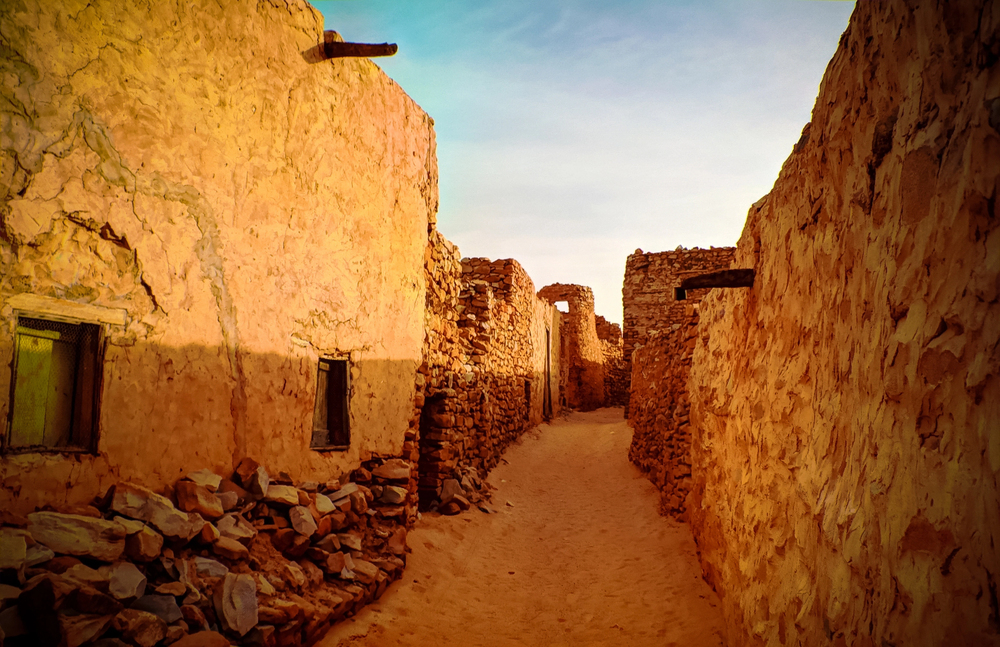
Sand continuously reclaims portions of this ancient Saharan trading post, creating an evolving installation where human construction merges with natural processes. The stone libraries containing precious medieval manuscripts appear to be melting back into the desert, their partially submerged forms suggesting impermanence despite their centuries-old stone construction.
Narrow streets wind between sand-colored buildings in compositions that change daily as wind reshapes the encroaching dunes against architectural elements.
Santorini, Greece
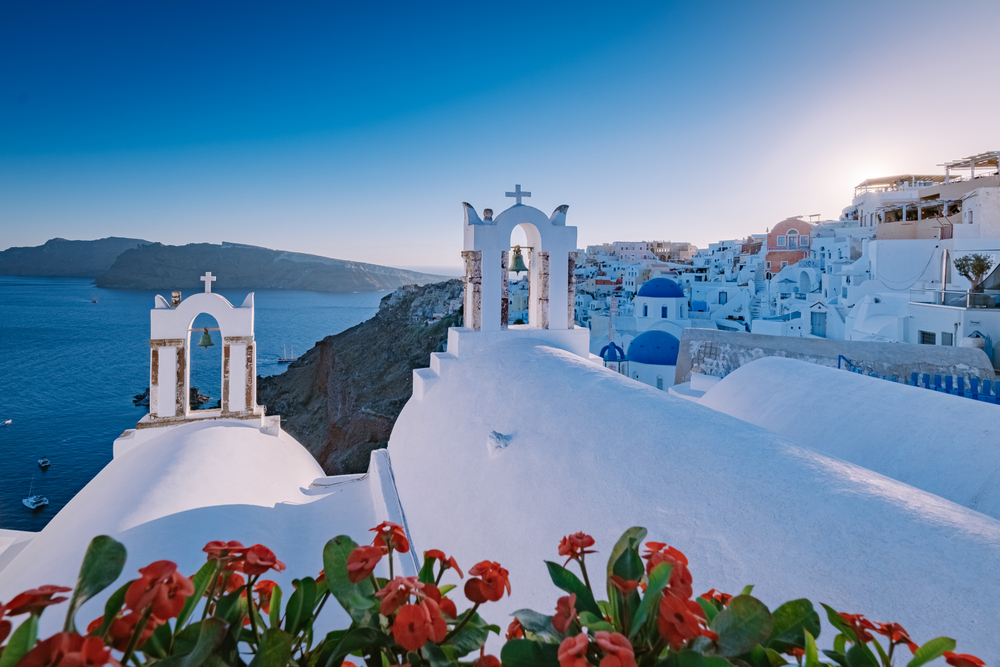
Though famous for its Mediterranean views, Santorini’s villages occupy a semi-arid volcanic landscape where water scarcity shapes distinctive architectural forms. The cascading white structures with blue domes create a dramatic contrast against black volcanic soil, forming a massive color field composition across the caldera walls.
Underground cave homes carved into soft volcanic tuff resemble sculptural negative spaces, their curved interior volumes creating plays of light and shadow throughout the day.
Like Travel Pug’s content? Follow us on MSN.
Jaipur, India

The ‘Pink City’ rises from Rajasthan’s arid plains as a masterpiece of urban planning. Its terracotta-washed buildings create a monochromatic installation punctuated by intricate decorative elements.
The precise grid layout established in 1727 demonstrates mathematical harmonies similar to conceptual art, while the latticed windows and detailed facades offer textural complexity within the unified color scheme. Specific buildings like the Hawa Mahal function as architectural sculptures, their distinctive forms transforming depending on viewing position.
Yazd, Iran
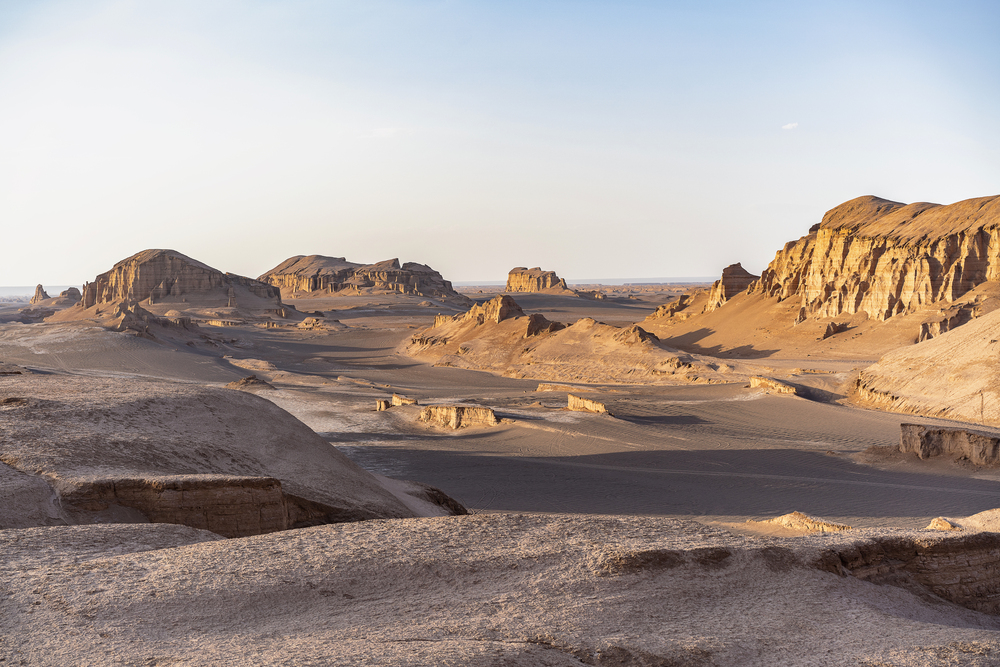
The ancient desert city of Yazd presents one of history’s most sophisticated environmental installations, with wind-catchers (badgirs) creating a forest of sculptural towers above the skyline. These functional ventilation systems, some date back around 2,000+ years, capture passing breezes and channel them into buildings below, their varied forms creating a kinetic architectural experience.
The city’s maze-like passageways, covered bazaars, and earthen architecture form a cohesive artistic statement about human adaptation to extreme environments.
Chan Chan, Peru
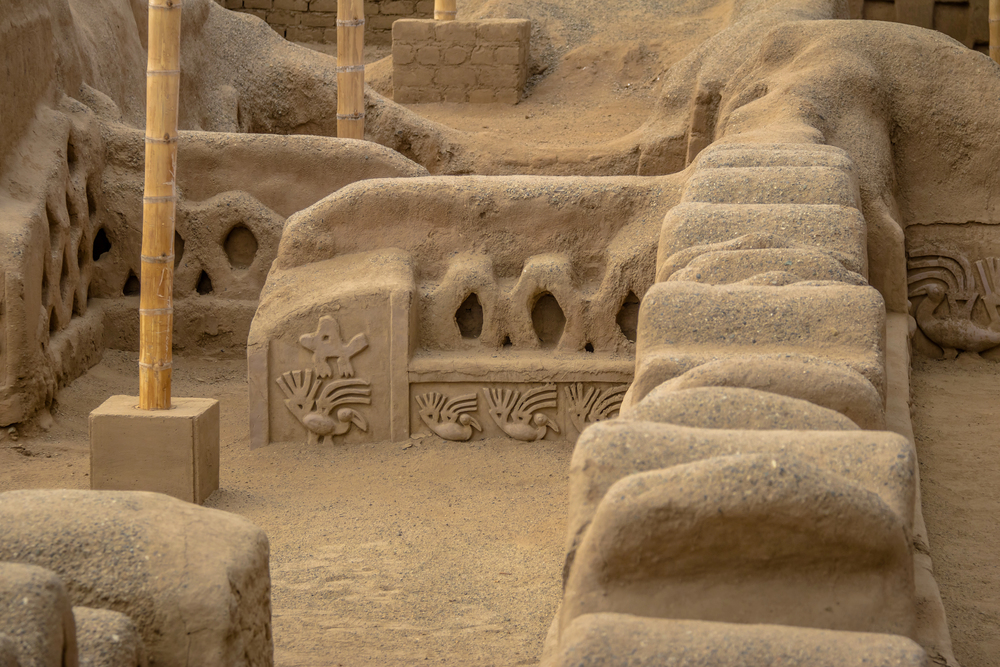
The ancient adobe capital of the Chimú civilization stretches across Peru’s coastal desert as a massive earthwork of geometric precision. Intricate relief carvings depicting sea creatures and abstract patterns cover the massive walls, creating textural fields that change dramatically with lighting conditions.
The site’s sophisticated water management systems, including reservoirs and canals, form functional elements integrated into the overall compositional structure of this vast architectural installation.
Like Travel Pug’s content? Follow us on MSN.
Sedona, Arizona

Nature and human development create a joint installation in Sedona, where contemporary architecture responds directly to the dramatic red rock formations surrounding the town. Building codes requiring earth-toned materials ensure human elements visually integrate with the landscape while enhancing its natural sculptural qualities.
The town’s conscious positioning of structures to frame specific rock formations creates curated viewsheds that function like environmental art, changing dramatically with time of day and weather conditions.
Goreme, Turkey

The ancient cave settlement in Cappadocia’s Goreme Valley transforms natural volcanic formations into habitable sculptures through centuries of carving and adaptation. Churches cut directly into conical rock formations containing sophisticated Byzantine frescoes, creating immersive environments where architecture, art, and landscape become inseparable.
Hot air balloons regularly floating above the landscape add ephemeral kinetic elements to this geological-cultural installation.
Timbuktu, Mali
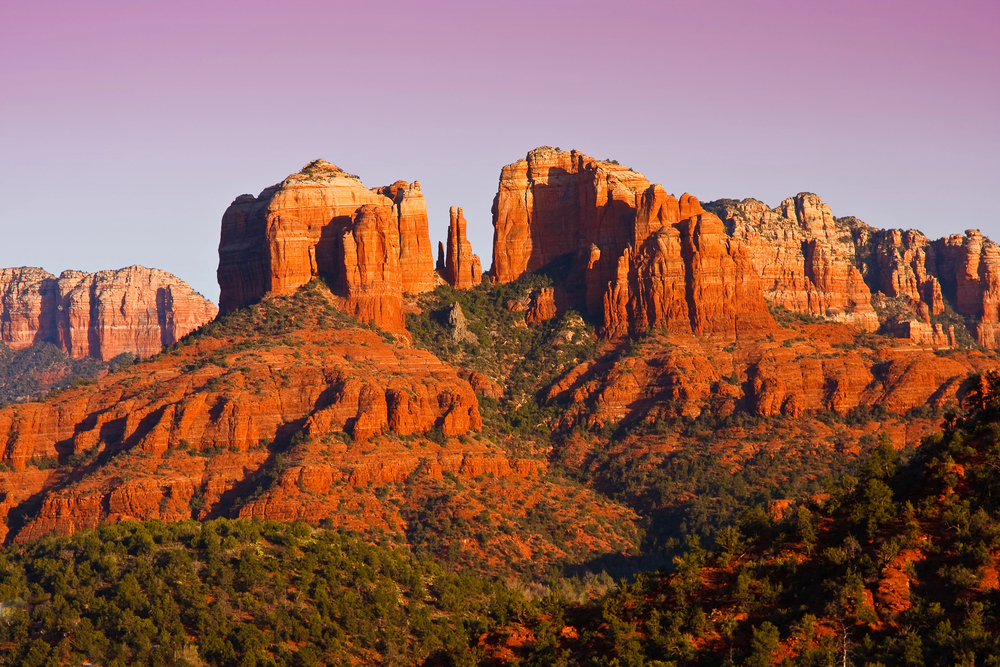
Rising from the southern edge of the Sahara, Timbuktu’s earthen architecture creates a monochromatic installation punctuated by protruding wooden beams that cast evolving shadow patterns across façades. The ancient mosques, with their distinctive mud-brick construction, demonstrate material transformation, as annual replastering ceremonies maintain structures that would otherwise dissolve back into the desert.
The city’s legendary remoteness adds conceptual dimensions to its physical presence, making it simultaneously real and mythical in the global imagination.
Like Travel Pug’s content? Follow us on MSN.
Petra, Jordan
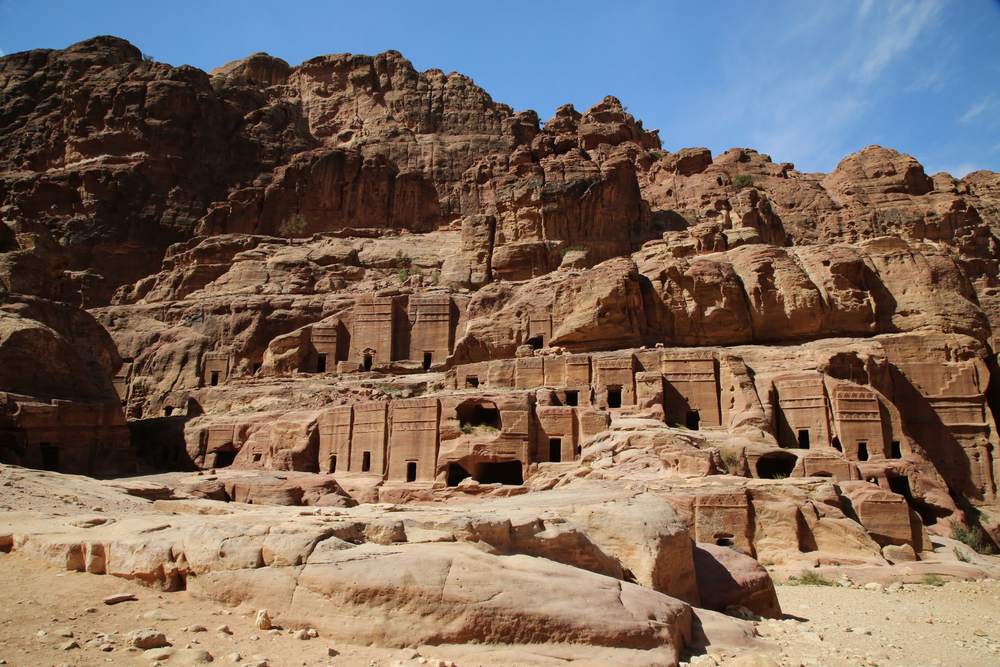
Carved directly into rose-colored sandstone cliffs, Petra represents one of humanity’s most ambitious sculptural installations, with monumental façades emerging from natural rock formations. The narrow Siq entrance creates a dramatic processional experience culminating in the revelation of the Treasury, an orchestrated sequence resembling contemporary environmental art.
Water management systems incorporated throughout the site add functional elements to the artistic composition, demonstrating how necessity and aesthetics merged in Nabataean culture.
Palmyra, Syria

Before recent conflicts damaged portions of this ancient caravan city, Palmyra stood as a perfectly preserved installation of classical architecture rising from the Syrian Desert plains. Colonnaded streets extending over a mile created rhythmic perspectives similar to contemporary minimalist installations, with precisely spaced elements stretching toward the horizon.
The site’s position at the crossroads between the Roman and Persian worlds resulted in a unique architectural synthesis, creating a cultural hybrid that transcended both parent traditions.
Leh, Ladakh, India
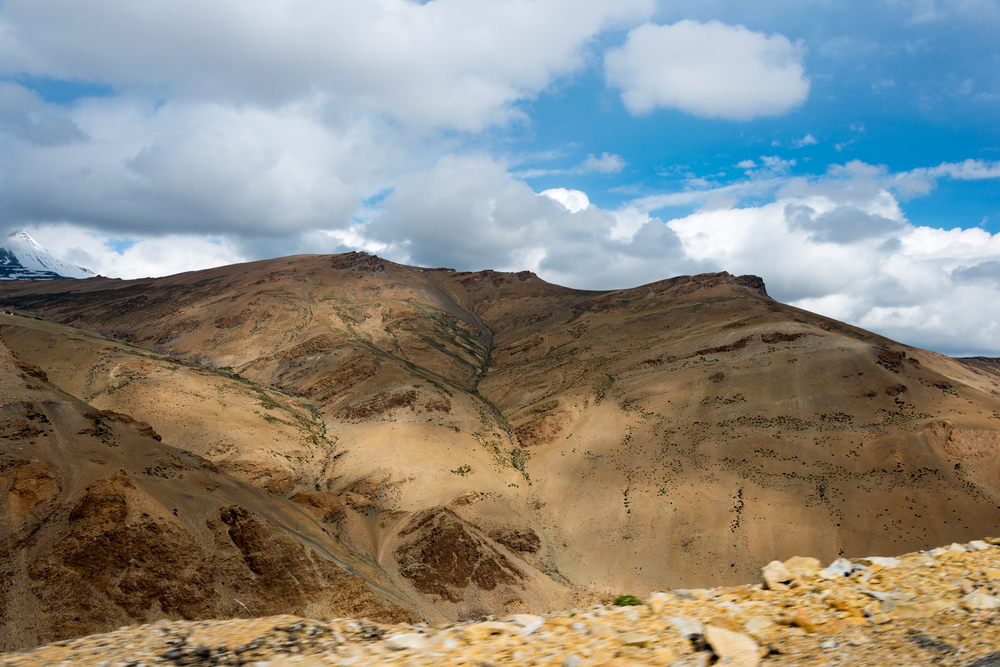
Perched at approximately 11,500 feet in the Himalayan high desert, Leh presents a vertical installation ascending its mountainside, culminating in the royal palace that appears to grow from the rocky peak. The whitewashed buildings with their flat roofs create geometric compositions against the stark mountain backdrop, while prayer flags add kinetic color elements activated by constant wind.
The town’s positioning to capture maximum sunlight in this extreme environment demonstrates how survival necessities created compositional brilliance.
Like Travel Pug’s content? Follow us on MSN.
Bagan, Myanmar
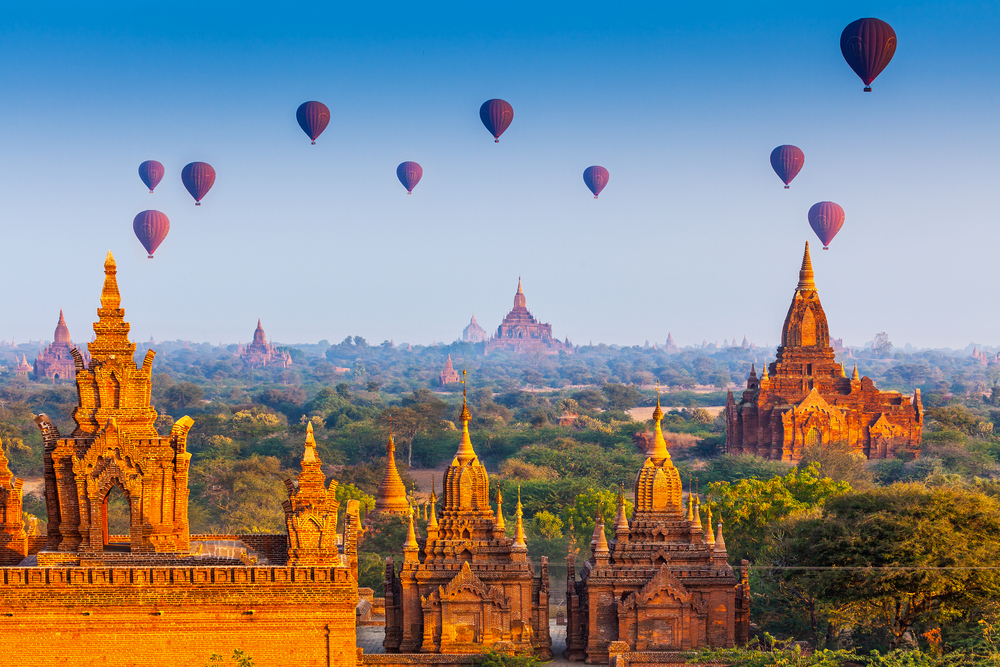
The arid plains of central Myanmar host one of history’s most extensive architectural installations, with over 2,000 Buddhist monuments and stupas scattered across the landscape. The varied forms, from massive pyramidal structures to delicate spires, create a three-dimensional composition visible for miles across the dusty flatlands.
Dawn balloon flights reveal the installation from above, where mathematical relationships between structures become apparent in ways impossible to perceive at ground level.
M’Hamid, Morocco
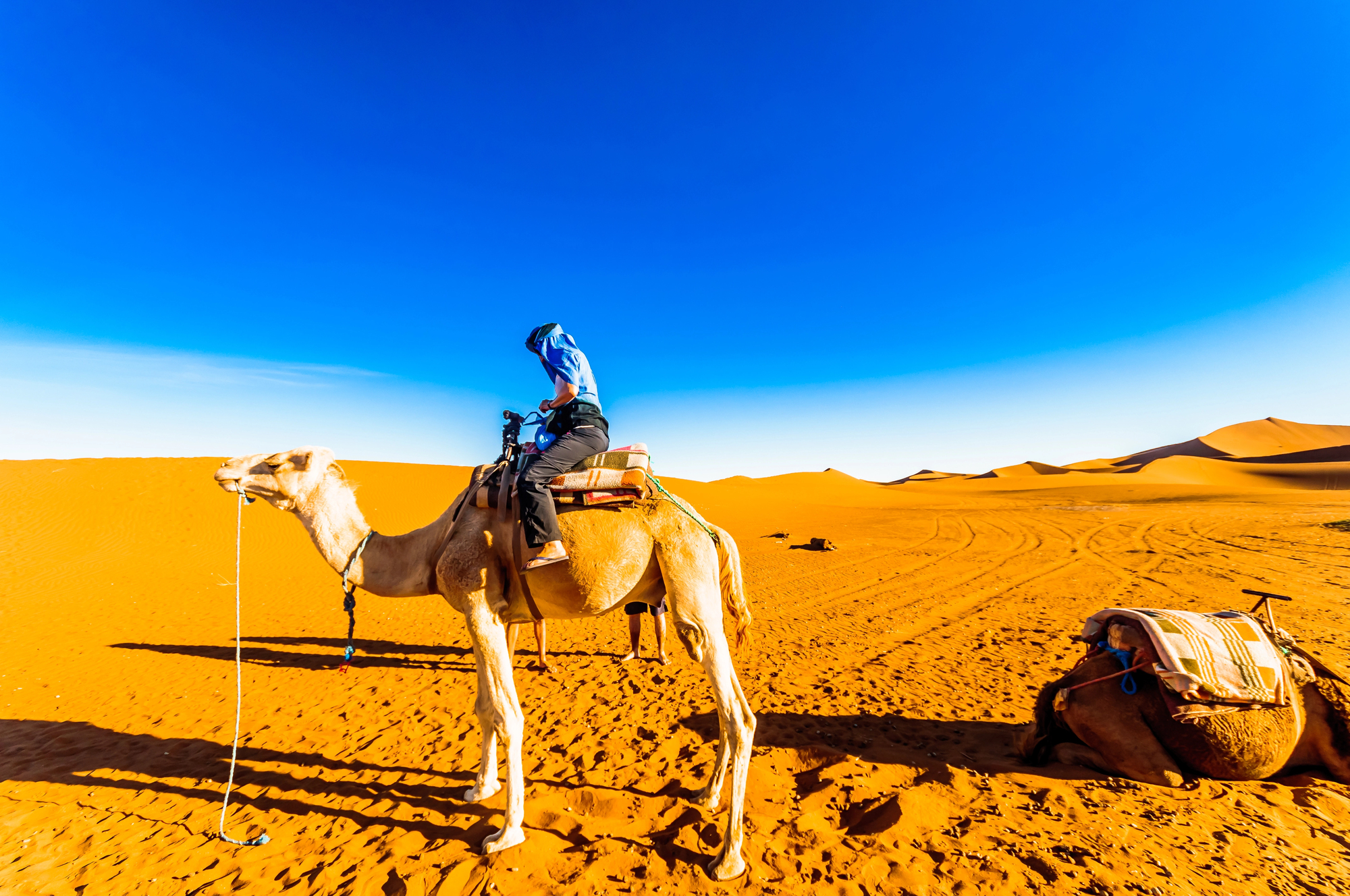
This Saharan outpost represents the last permanent settlement before the great emptiness of the desert’s interior, creating a liminal installation at the threshold between habitation and wilderness. Traditional rammed earth structures with minimal ornamentation echo the simplified forms of contemporary environmental art, their weathered surfaces registering the passage of time and elemental exposure.
The town’s position at the final oasis of the Draa Valley creates a narrative installation about environmental boundaries and human adaptation.
Kolmanskop, Namibia

Natural processes have transformed this abandoned diamond mining town in the Namib Desert into a surreal installation where sand reclaims human structures in slow motion. Half-buried buildings with dunes flowing through doorways and filling rooms create interior landscapes that blur the boundaries between architecture and environment.
The weathered pastel colors of the German colonial buildings contrast dramatically with encroaching orange sand, forming compositions that change continually as desert winds redistribute sand through the settlement’s skeletal remains.
Like Travel Pug’s content? Follow us on MSN.
The Desert as Canvas
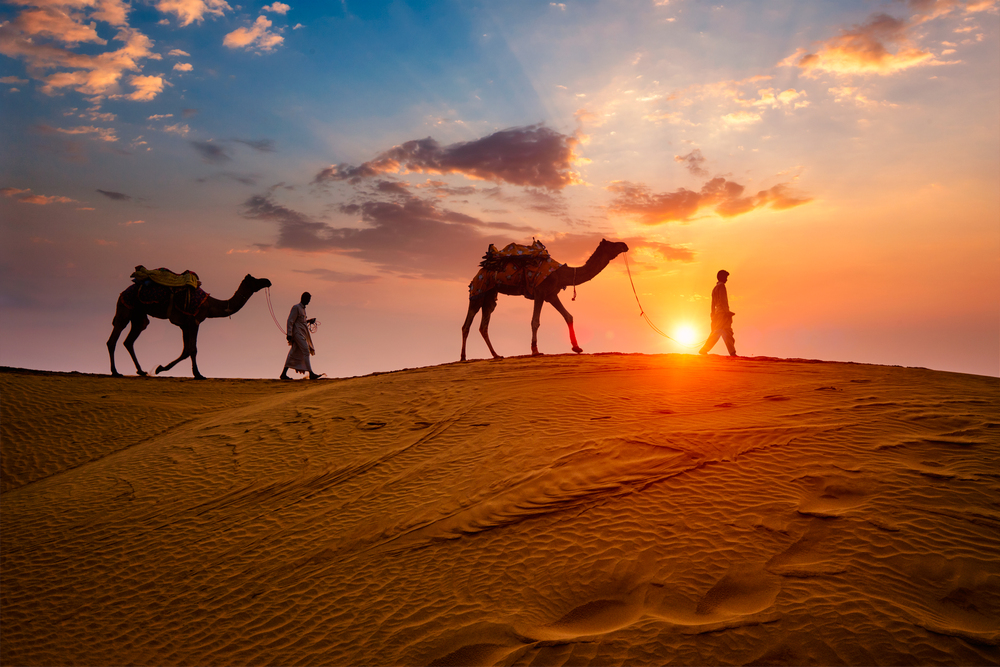
These remarkable settlements demonstrate how challenging environments inspire creative responses that transcend mere functional construction. The necessity of adapting to extreme conditions has produced living installations where human intervention and natural landscape become inseparable artistic expressions.
As contemporary environmental artists create site-specific works in desert settings, they continue a tradition thousands of years old—using the desert as both medium and canvas for exploring the relationship between humans and the most elemental landscapes on Earth.
More from Travel Pug

- Cities Growing so Fast You Won’t Recognize Them in 10 Years
- 13 Destinations Where Tourists Regularly Regret Their Trip
- 20 Obscure WWII Sites Even History Buffs Don’t Know About
- 10 Under-the-Radar Mountain Towns That Are Both Affordable and Beautiful
- Remote Villages in Europe Where You Can Live for Free in Exchange for Work
Like Travel Pug’s content? Follow us on MSN.
